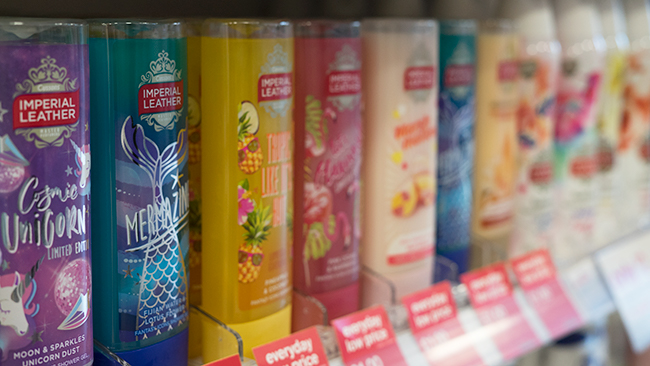A progressive bill targeting gender-pricing was shot down in the House of Commons this week, but marketing towards consumers based on gendered assumptions is still very much alive.

As I walk down the long commercial aisle at my local Boots it smells slightly of cleaning solvent and icing sugar. I scan across the variously coloured, bottled and branded options on display to find which glorified body soap most appropriately fits my daily mood. Could it be Palmolive’s Feel Glamorous shower gel? Or maybe Ted Baker’s Fragrant Bloom Shimmer body wash. What do I know? Maybe I’m just an average Orange Flower or — I shudder at the thought of it — a simple Apricot Marshmallow.
As my imagination skips, undetermined, across the various sensual scrubs that could jump start the day I wonder: am I the single outlier in a world of options? Or are these choices an illusion?
Only 11% of creative directors in the marketing industry are women. That means nearly nine out of every ten individuals in a ‘creative’ meeting is a man asking: what do women want? It’s an impossible question to determine — every woman and man, is unique. We have our own ideas of what it means to Pause for a Pamper. Yet market segmentation, the process of dividing consumers into groups based on different characteristics, is prevalent in almost everything we buy. Fortunately for the marketing industry, it doesn’t take a genius to discover the most traditional distinction between us: gender.

For companies selling consumer goods, the dominant gender association affects everything from colour and texture to scent, shape and size. Not surprisingly the ‘distinctive’ features for women are bright colours or pastels, florals, smooth lines and rounded shapes— and for men, it’s simply the opposite. When this anachronistic gender line is drawn through our toiletries aisle it reveals plenty, and pays marketers a hefty (pink and scented) penny.
On the one side you have fifteen shades of ‘feminine’ body wash, deodorant and shampoo, and on the other, three variations of essentially the same products ‘for men.’ In a sense women have more options here, more freedom of choice. But when you boil down the body shimmer it turns out women pay more for an elaboration on what marketers think we want.
.embed-container { position: relative; padding-bottom: 46.666666666666664%; height: 0; overflow: hidden; max-width: 100%; } .embed-container iframe, .embed-container object, .embed-container embed { position: absolute; top: 0; left: 0; width: 100%; height: 100%; }
An investigation by The Times newspaper in 2016 found that women and girls were charged on average 37% more for beauty products, clothes and toys— but this inequality is not particular to the UK. A study of gender-based pricing in New York City, appropriately titled “From Cradle to Cane,” found that personal care products had the largest average disparities between genders, with women’s goods costing more 56% of the time. In services at least, the reasoning for this gender-based pricing is a football field shy of understandable.
Take for example, haircuts. It takes more time to cut and style for a woman than it does for a man— especially when you count the cost of the chemical goodness they spray over it. Or take one of my favourite explanations for why women are changed more comes from car mechanics. Women are quoted higher prices than their male counterparts when repairing a vehicle because “sellers exploit expected differences in knowledge about appropriate prices.” Ah, bless. This run-of-the-mill sexist rationale is hilariously transparent— but let’s get back to the real culprit: those beauty products.

Unfortunately for marketers, aesthetic is far from the the modern women’s raison d’etre. Continuing to assume that women are willing to pay more (while getting paid less) for a product that defines them as a Pretty Pearl is completely missing the mark. When feminism is driving against stereotyping, and the power that rests in traditional gender roles is quickly dissolving, it’s time to take Apricot Marshmallow and the assumptions supporting it, off the shelf.
